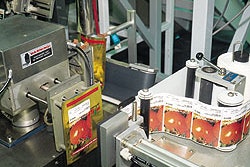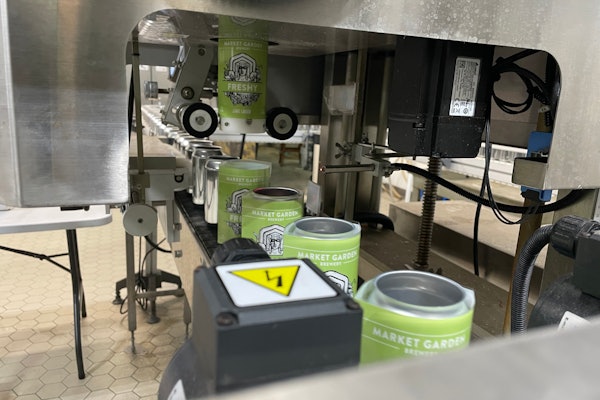The subject of food allergens and more specifically their declaration on food labels has shifted beyond ingredients and suppliers to ingredient suppliers. Now part of the focus has shifted to converters, and it’s creating a good deal of discomfort. Laurel Bloch, the spokeswoman for American Packaging (Rochester, NY), says her company declines to comment when asked about allergens. “We think you should be asking that question to the food manufacturers,” she says. “The ball is in their court.” Based on Food and Drug Administration guidelines, converters need to be aware of whether their plants use wheat, egg, peanut, milk, soy or any other food allergen as a dusting agent either in the production of its food packaging, to keep the packaging from sticking together, or as an additive, to keep food from sticking to the packaging. Joe Backes, technical manager for C&H Packaging (Merrill, WI), was a bit less defensive. “We are converters, and some converters do use starch dust,” he concedes. “But we don’t. In terms of allergens in our packaging, we have gotten questions about latex. And we went back to our film suppliers to make sure there is no latex in their film. But no one has asked us about food allergens in our packaging.” People will be asking questions now, though. And not just any people. On May 3, the Food and Drug Administration published a Compliance Policy Guide for FDA inspectors. It covers a lot of ground relating what the inspectors should look for inside a food processing plant for possible food allergen contamination. However, one instruction says: “Determine if the firm has assessed whether the packaging material used in direct contact with the product contains an allergen, e.g., foil coated with wheat ingredient as releasing agent.”
Declaration is key It is perfectly legal, it should be emphasized, to use a food allergen in food packaging. But that allergen must then be listed in the ingredients panel on the product label, IF, and this is important, there is a risk of the allergen migrating to the food. That labeling is required so that someone with an allergy to wheat, peanuts, tree nuts (walnuts, pecans, etc.), shellfish, fish, eggs, milk, or soy will know to steer clear of that food. One reason the FDA issued the new Compliance Guide is that food recalls for lack of allergen labeling have been increasing. Recalls went from 57 in fiscal 1995 to 90 in fiscal 1996, stayed at about that level for four years, and then jumped to 121 in fiscal 2000, the last year for which the FDA has data. Food companies, big and small, have had to recall products. Kellogg Co., Battle Creek, MI, pulled back Eggo NutriGrain Whole Wheat Waffles because of peanut contamination in October 2000. Hershey Foods Corp. Hershey, PA, inadvertently forgot to declare “egg whites” in the ingredient statement on the outside packaging of a variety pack of 18 Cadbury’s Eggs, although the individual packaging around the creme eggs that contained the egg whites was properly labeled. In addition to the escalating recalls, the FDA was a little startled by a study of food manufacturers it conducted in 1999 and 2000 with the states of Wisconsin and Minnesota. A total of 85 companies were visited. Of that total, 21 were producing foods containing peanut or egg allergens without declaring the presence of those allergens on their labels. Of 118 samples of baked goods, candy, and ice cream that inspectors suspected were contaminated, 23 contained enough peanut or egg proteins to cause an allergic reaction.
Cross contamination Most of those instances stemmed from inadvertent production run contamination. Contamination most frequently results from food being processed on a production line that had previously been used for another product containing an allergen such as peanuts. So, for example, a company packaging corn biscuits on a production line that had just handled peanut crackers could end up with peanut residue on the corn biscuits. The corn biscuits would not list “peanuts” as an ingredient, but if someone buys the corn biscuits and has a food allergy to peanuts, he or she could suffer a severe allergic reaction. The Minnesota/Wisconsin survey also turned up cases where the food manufacturer had not updated labels to reflect new product ingredients that contained potential allergens. Regina Hildwine, senior director of food labeling and standards for the National Food Processors Assn. (NFPA), says, “It appears the FDA exercise identified the need for some remediation.” The NFPA and other food trade associations have formed the Food Allergy Issues Alliance and are working on a “how to” manual that tells food companies how to navigate every shoal in the food allergy stream.























